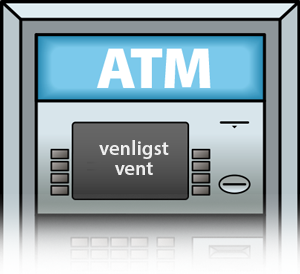When was the last time you travelled through a country where you didn't know the local language?
Not having any hooks into an unfamiliar culture (to which language is a powerful inroad) can be a wonderful opportunity to test a user experience from a true outsider's perspective.
Working within our home culture/language, we can inevitably lose a level of objectivity.

I remember using a Danish ATM for the first time many years ago. It was early evening, in the dark of winter with snow, and with the bank closed.
I selected English as the language, entered my PIN, and selected the amount to withdraw. The screen user interface then disappeared completely, and was replaced by a short phrase in Danish,Helvetica on a gray background. For a significant while.
My immediate thought was: something had gone wrong and the machine was about to take away my card! It read an unpleasant few seconds.
And then the money came out and the user interface returned. Whew!
Even the simplest messages like "please wait", when presented in an ambiguous context, in a language we don't understand, and experienced in a foreign place, can be more distressing than we could have ever anticipated in the design lab.
One way to restore a greater level of objectivity in the evaluation of designs could be to set all the user interface to another language, or even lorem ipsum.
This could force us to consider adding subtle but useful elements to improve communications even without the text. In the case of the ATM, it would have helped for the non English phrase to appear with an appropriately reassuring icon, or even on a green background.
..